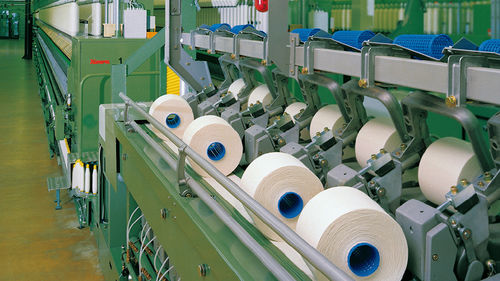When it comes to the conveyor belt for your application, there are many things to consider, including material type and thickness, belt construction, manufacturer reputation and standing, belt design features, load capacity, and more. This blog article provides detailed information on a wide variety of different conveyor belt options you might want to choose from.

What are the Types of Conveyors?
There are a few different types of conveyor belts that can be used in the production line. Each type has its own unique function and is used for various purposes. The screw conveyor belt is one type of conveyor belt that allows for high speed and efficiency. Other types include the boom conveyor belt, chain belt, continuous loop belt, roller belt, and spiral or helical conveyors. Conveyors are an important part of a production process. They are used to move various materials in manufacturing and distribution industries. If you’re unsure what type of conveyor is right for your application, consider the following types: Conveyors are an integral part of any manufacturing process.
The conveyor belt is a key factor in the motion of your production line. There are many different types of conveyor belts and each has their own benefits and drawbacks. Conveyors are a key component to moving products continuously. They are used in many different industries and manufacturing processes. There are many types of conveyors with many benefits and limitations. Choosing the right one is essential for your project success. Conveyors are available in different sizes, each designed for specific applications. The three most common types of conveyors are belt, chain, and screw conveyors.
Why Use Fabric Conveyor Belts
Conveyor belts are a type of fabric belt designed to be used in industrial and manufacturing processes, including the belting of machinery. The great thing about these belts is that they improve productivity, reduce costs, and lessen wear on other machinery. They also decrease energy consumption and increase throughput, making them an ideal choice for many applications.
Fabric conveyor belts are the perfect solution for a wide variety of applications. They are ideal for use in food processing, manufacturing and other industrial applications. There are many benefits to using fabric conveyor belts in lieu of more traditional conveyors, including improved efficiency and performance, reduced noise levels, and lower maintenance costs. Fabric conveyor belts use less material than steel belts, saving you money and saving the environment. Plus, they are quieter and smoother.
How to Select the Right Type of Belt for Your Application
Depending on what type of conveyor belt you are planning to use, you’ll need to decide whether a driven belt or a fixed belt will work best. The type of conveyor belt you choose can also determine the cost and installation difficulty. This is a guide to help you to choose the best belt for your application. There are many types of conveyor belts that are used in different applications and they all have their own benefits and drawbacks. For example, there are rubber coated conveyor belts that offer smooth continual motion while stainless steel belts may last longer but not offer as much smoothness. There are many types of conveyor belts to choose from. Each type has its advantages and disadvantages, which should be considered when choosing the right belt for your application.
In order to determine which type is best for you, it’s important to consider each belt’s features, including the material used in production, durability, size, speed, and cost. There are numerous types of conveyor belts on the market. Types vary in appearance and performance. To select the best belt, a few factors are important to consider including material, size and belt speed.
Factors to Consider When Buying an Industrial Conveyor Belt
When purchasing a conveyor belt, there are many factors to consider. These include the material, length, width, slippage protection and construction. Some of these factors are subjective while others are more objective. The purpose of this blog is to provide you with an overview of what some of these factors are so that you can make an informed decision on which industrial conveyor belt is right for your application.
When choosing the best conveyor belt for your application, it’s important to consider the factors listed below. A good conveyor belt will not only make your work easier but also more efficient. The first thing to think about when choosing a conveyor belt is what you need it for. Consider these factors before making your selection:
– The materials the belt is made of
– The size of the belt
– If the belt will be used for multiple purposes
– How often the belt will be changed
Conclusion
Choose the wrong conveyor belt, and your production will suffer. Choose the right one, and you’ll be able to produce more product for less cost and with less waste. If you are looking for a conveyor belt to fit your application, there are many things that you need to think about. For example, the best choice will depend on your location and what kind of work your conveyor belt will be doing. Additionally, be mindful of how much space you have available.

James is a great tech-geek and loves to write about different upcoming tech at TechyZip. From Android to Windows, James loves to share his experienced knowledge about everything here.

Leave a Reply